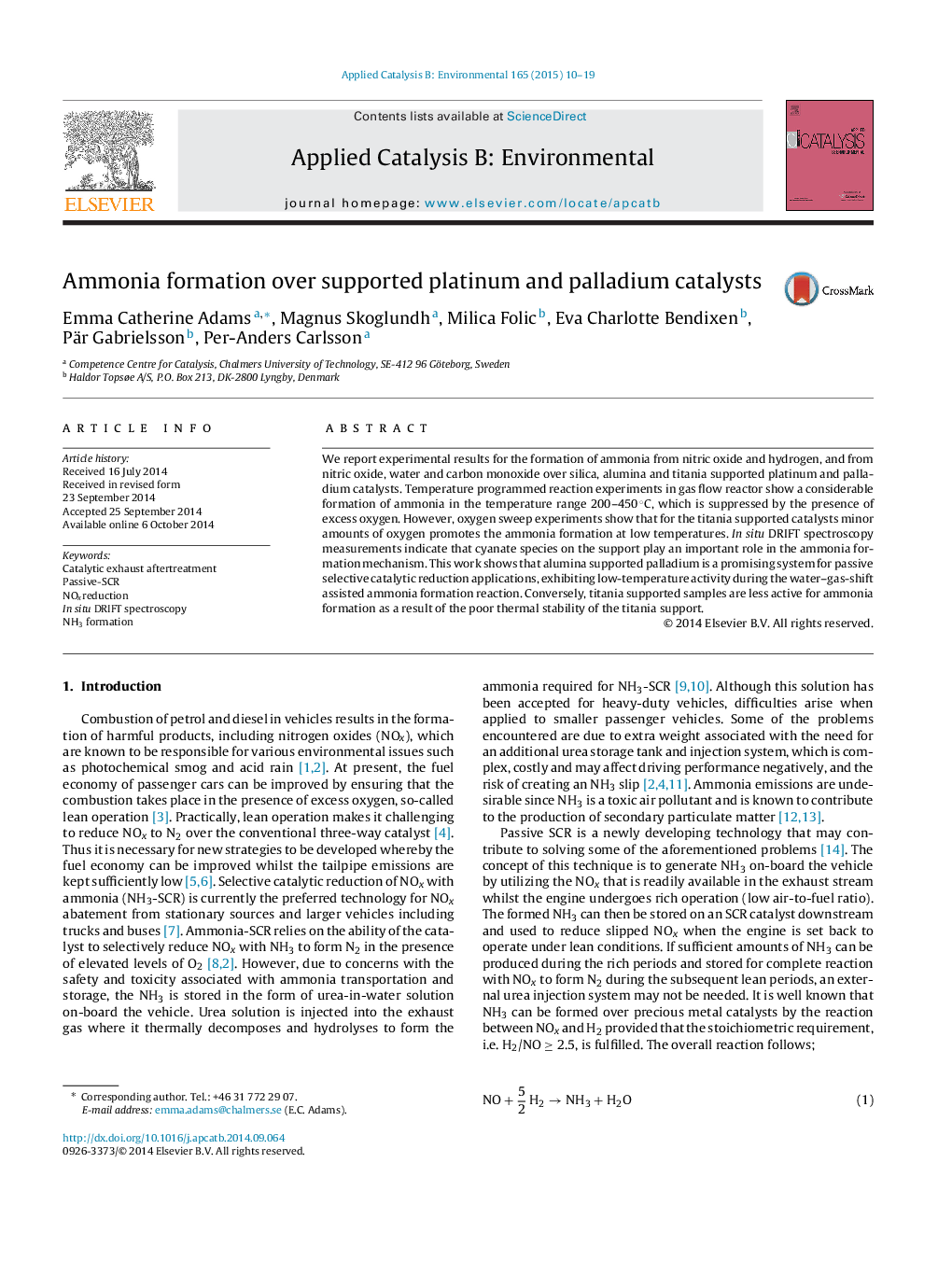| Article ID | Journal | Published Year | Pages | File Type |
|---|---|---|---|---|
| 45528 | Applied Catalysis B: Environmental | 2015 | 10 Pages |
•Effect of oxygen on ammonia formation from NO + H2 and NO + CO + H2O gas mixtures for passive SCR applications.•Promoting effect of oxygen on ammonia formation over titania supported noble metal catalysts.•WGS reaction and formation/hydrolysis of surface isocyanate species are important routes in the formation of ammonia from NO + CO + H2O gas mixtures.
We report experimental results for the formation of ammonia from nitric oxide and hydrogen, and from nitric oxide, water and carbon monoxide over silica, alumina and titania supported platinum and palladium catalysts. Temperature programmed reaction experiments in gas flow reactor show a considerable formation of ammonia in the temperature range 200–450 °C, which is suppressed by the presence of excess oxygen. However, oxygen sweep experiments show that for the titania supported catalysts minor amounts of oxygen promotes the ammonia formation at low temperatures. In situ DRIFT spectroscopy measurements indicate that cyanate species on the support play an important role in the ammonia formation mechanism. This work shows that alumina supported palladium is a promising system for passive selective catalytic reduction applications, exhibiting low-temperature activity during the water–gas-shift assisted ammonia formation reaction. Conversely, titania supported samples are less active for ammonia formation as a result of the poor thermal stability of the titania support.
Graphical abstractFigure optionsDownload full-size imageDownload as PowerPoint slide
